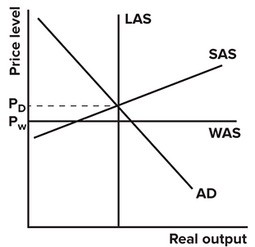Refer to Figure 3-2. An increase in price of inputs would be represented by a movement from
A) A to B.
B) B to A.
C) S1 to S2.
D) S2 to S1.
D
You might also like to view...
Keynes thought that one macroeconomic problem is that an economy: a. can tend toward an equilibrium level of output that is below the potential level
b. will move back to its potential after a business cycle on its own. c. always operates at the potential and business cycles are created by government intervention. d. can be pushed below the equilibrium level of output by fiscal policy. e. can be pushed away from the potential if prices and wages are flexible.
In a planned economy, the means of production are owned by private individuals.
a. true b. false
GDP in an economy is $4,600 billion. Consumer expenditures are $3,500 billion, government purchases are $900 billion, and gross private domestic investment is $400 billion. Net exports are:
a. -$400 billion b. +$200 billion c. +$400 billion d. -$200 billion
In the graph shown, what could balance the trade deficit (reduce domestic consumption)?
A. A hurricane that damages domestic manufacturing plants B. Expansionary fiscal policy C. Lower domestic wages D. Contractionary monetary policy